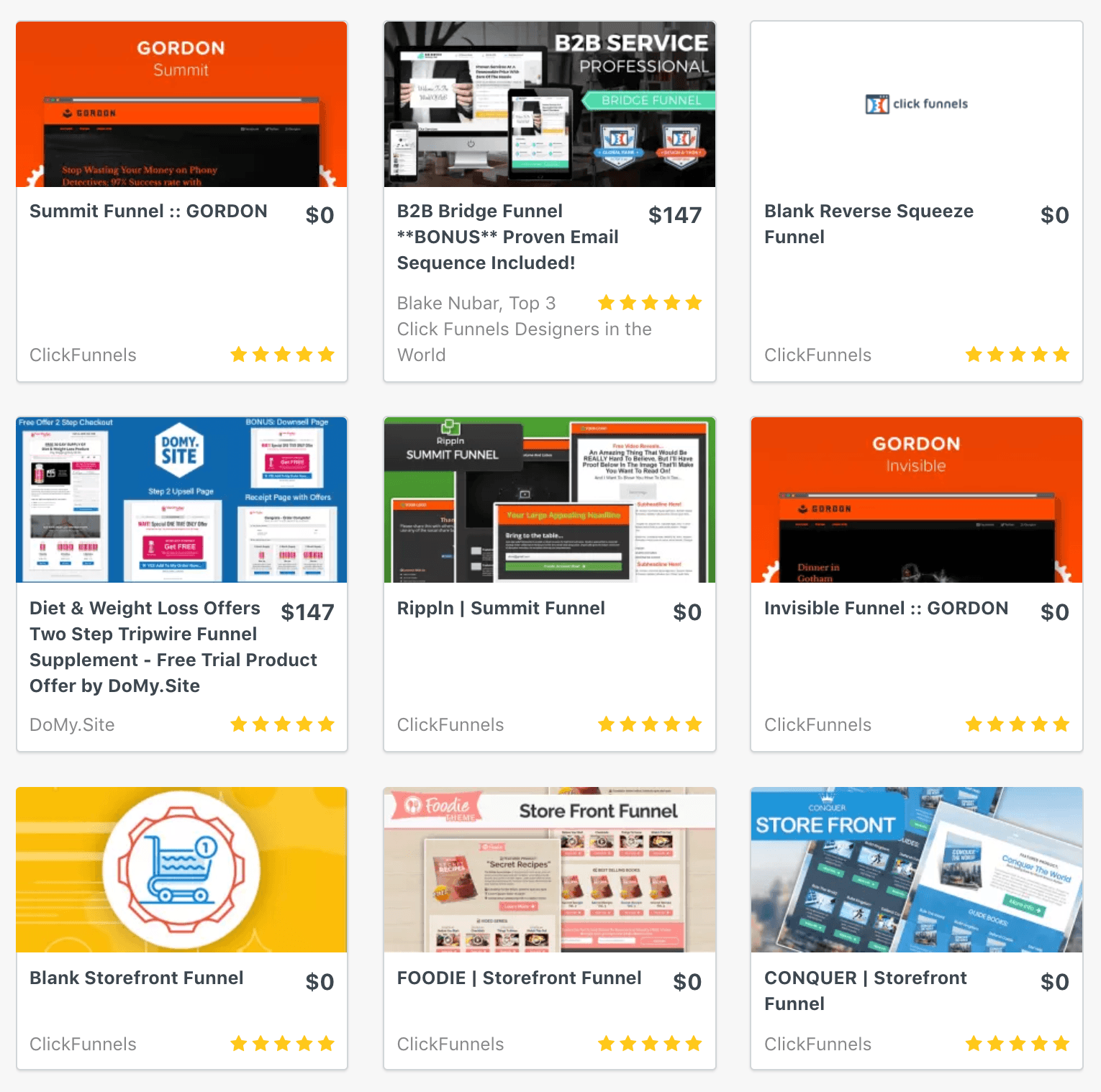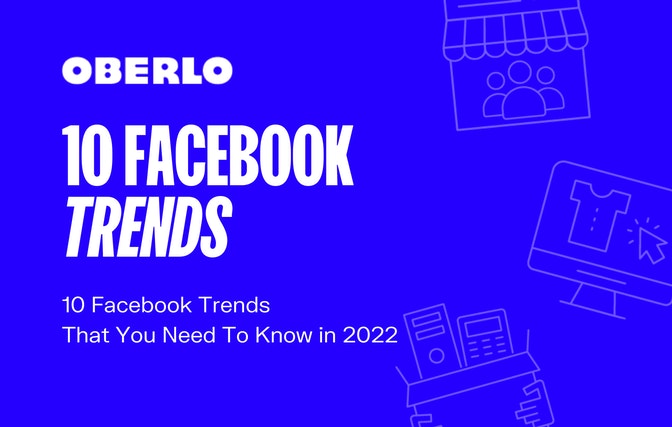Not sure how to create a website? You’re not alone.
Making a website can be confusing.
When there are thousands of different ways to create a website, how should you do it?
Should you use a website builder? If so, which one? Do you need to learn how to program? Should you pay a web designer to create a website for you?
If you’re not careful, you could easily waste time and money creating the wrong type of website.
Thankfully, creating a website doesn’t have to be complicated or costly.
In this article, you’ll learn about six ways to create a website perfect for your needs. Plus, none of these methods require you to have programming skills or a huge budget.
Sound good? Let’s dive in.



1. How to Build a Website for Ecommerce: Shopify
Best for: Ecommerce businesses that sell or dropship products online.

Shopify is a website builder designed specifically for ecommerce businesses.
The service powers more than 800,000 merchants and has processed more than $82 billion dollars of sales.
Plus, some of the biggest brands in the world use the Shopify ecommerce platform to sell their products, including:
- Wateraid
- The New York Times
- Penguin Books
- Redbull
- KKW Beauty
- Nestle
Here’s an example of a product search page from Shopify user Gymshark:

To see more Shopify store examples, check out: The 60 Most Inspiring and Successful Shopify Stores
Pros of Shopify
Shopify provides everything a store might need to succeed in ecommerce.
To start, Shopify will help you to secure your domain name.
Next, the Shopify dashboard is extremely intuitive and simple to use.
Plus, you can choose one of the many free Shopify themes to customize the look of your store.
It’s easy to customize your product pages, track inventory, and manage your orders from just one dashboard. And you can set detailed shipping costs for different regions and price points.
Shopify also provides detailed analytics and reports to help you optimize your business strategy.

Shopify Payments allows you to accept credit card payments instantly – no third-party accounts required.
And you can even use the Shopify POS System to take card payments in person.
Then there’s the Shopify App Store.
Like WordPress, Shopify provides access to thousands of apps for every imaginable need. You can use these to collect more product reviews, increase sales, and integrate your store with your social media accounts.

What’s more, if you’re just starting out in ecommerce, you can install DSers. This app allows you to choose some products and begin dropshipping them around the world.
When creating a website with Shopify, you never have to worry about coding, either – so you can focus on growing your business. Plus, with the Shopify App, you can manage your business on the go.
Lastly, as your business grows, there’s always more help, features, and functionality available. And when you hit the big time, there’s even Shopify’s enterprise solution, Shopify Plus.
Cons of Shopify
Shopify’s strength lies in its total focus on providing the best platform for commerce. However this is also its key weakness.
Shopify isn’t your best choice if you aren’t building a business.
In other words, if you want to build a portfolio, a blog, or other non-ecommerce assets, then you may want to use a different solution.
Lastly, Shopify’s starting price isn’t as cheap as some other website builders. But then again, other website builders aren’t always designed to make you money.
Shopify Pricing
Shopify provides a free 14-day trial, then the pricing plans are as follows:
- 14-Day Free Trial
- Shopify Lite – $9/month
- Basic Shopify – $29/month
- Shopify – $79/month
- Advanced Shopify – $299/month
- Shopify Plus – Custom plans available
Learn more about Shopify’s pricing plans here.
2. How to Make a Website for General Purpose: Wix
Best for: Freelancers, consultants, and personal use.

Wix is one of the most popular website builders available.
With more than 200 million users in 190 countries, the service is a hit among those who want a simple, all-in-one website builder for general purpose.
The service is versatile too, saying, “Wix has something for everyone. So, whether you’re a photographer, musician, small business owner, entrepreneur, bride or student, we provide all the tools and features you need to build an amazing online presence.”
Here’s an example of a Wix website from tattoo illustrator Elebea:

Pros of Wix
Wix is a simple, cloud-based website builder.
This means you don’t need to download any special software or pay a third-party server to host your website – everything is done online in your browser.
The service provides more than 500 free designer-made website templates to help you create a website.
And once you’ve chosen a template, it’s easy to customize it for your own needs using Wix’s intuitive drag and drop editor.

The service also provides access to more than 250 website apps which can help you to create a website.
These apps allow you to add additional features and functionality to your website, such as a forum, gallery, events, live chat, social media widgets, and more.
Plus, Wix’s starting plan is completely free.
Also, the Unlimited and VIP plans are very reasonably priced compared to other options.
Cons of Wix
Compared to other website builders, Wix is short on features and customization options.
For this reason, it’s likely that fast-growing digitally-focused businesses will inevitably outgrow the service.
The free plan also limits your bandwidth and storage.
This isn’t a problem if you plan to create a website with only a few pages. However, if you plan on adding plenty of photos and videos to your website, you may run out of space and need to upgrade to a paid plan.
What’s more, the free and Connect Domain plans will display the Wix ads on your website. To remove these, you must upgrade to the Combo, Unlimited, or VIP plan.
Another drawback is that once you use Wix to create a website, you’re pretty much locked into the service.
If you ever decide to change website providers, it’s quite a complicated process, and will usually involve starting from scratch.
So if you’re not sure about starting a website with Wix, here are 8 best Wix alternatives for you to consider.
Wix Pricing
Wix provides five different plans to choose from depending on the features you need:
- Free
- Connect Domain: $3/month
- Combo: $6/month
- Unlimited: $8/month
- VIP: $18/month
Learn more about Wix’s pricing here.
3. How to Create a Website for Promoting Creative Works: Squarespace
Best for: Photographers, digital artists, and other creative professionals.

New York-based Squarespace has been in business as a website building platform since 2004.
Its key selling points include a highly intuitive visual editor, an easy-to-navigate backend, and stunning design templates that look great on both mobile and desktop screens.
Squarespace templates offer a decent amount of white space, making them ideal for showcasing a creative portfolio in an elegant way.
Plus, you can use the drag-and-drop editor to customize them to a finer degree.
Creatives will love how Squarespace templates really let the content shine. And it’s nice to know that you can upload your work in whatever resolution and size you want – all of Squarespace’s plans include unlimited storage.
Squarespace also has extensions — a range of add-ons that add more functionality to your site. You can find extensions for key apps including Printful and Printique, as well as manage an email list.
Cons of Squarespace
While Squarespace works great for building an elegant website, it’s not the fastest site builder around.
Its templates get low scores when tested for speed, which could possibly result in a poor user experience.
Additionally, the usability of Squarespace’s site editor isn’t the most pleasurable to use — for example, it’ll ask you to save your work after each change rather than auto saving everything on its own.
What’s more, Squarespace’s layout doesn’t make it suitable for building larger websites with deep menu hierarchy. With just one sub-navigation, you can’t set up a multilingual site on their platform.
Fortunately, you can always use Squarespace alternatives if the platform doesn’t need your website building needs.
Squarespace Pricing
Squarespace provides four plans for you to choose from:
- Personal: $16/month
- Business: $26/month
- Basic Commerce: $35/month
- Advanced Commerce: $54/month
If you pay for a year in advance, then you’re looking at savings in the range of 25% to 30%. This boils down to $12, $18, $26, and $40 for the above four plans.
4. How to Set Up a Website for Blogging: WordPress.org
Best for: Professional bloggers and medium to large-sized businesses in need of control and flexibility.

WordPress is a giant.
WordPress’s flexibility, ownership, and limitless potential have brought it fame, popularity, and legions of diehard fans.
In fact, according to W3Techs, the service now powers 32.9 percent of all websites on the internet – that’s a lot of websites!
It’s particularly suited to professional bloggers. This is because WordPress allows users to retain complete control over their web presence and digital content.
Still, WordPress confuses a lot of people because there are actually two different types:
- WordPress.org is a free, open source website framework.
- WordPress.com is a cloud-based website builder.
Both services were created by Automattic and are pretty much the same, apart from a few key differences.
Like Wix, WordPress.com is an all-in-one website builder and hosting service. Simply log in, choose a plan, select a website theme, customize your website, and you’re off to the races.
However, in this section, we’re going to talk about WordPress.org. As mentioned, WordPress.org is a free, open source website builder. For this reason, it’s slightly more complicated to set up than all-in-one solutions like Wix and Shopify.
Here’s how it works:
First, you’ll need to head to a hosting provider like BlueHost or GoDaddy.
In essence, these hosting providers allow you to “rent” space on their servers to host your website. They’ll also help you to secure a domain name.
Once you have your hosting and domain name, you can install WordPress and get to work customizing your website. (Most hosting providers will help you to install WordPress in just one or two clicks.)
At this point, you can log into your self-hosted website and begin customizing it.
Pros of WordPress.org
If you want to maintain complete control over every aspect of your website, you must self-host it. Unlike cloud-based website builder services like Wix, self-hosting provides total freedom, control, and flexibility.
And if you’re going to self-host, WordPress.org is the framework to use.
What’s more, you’re free to access, study, change and redistribute WordPress’s open source code.
But it’s not just a playground for programmers.
Those of us lacking programming skills can use other people’s improvements, additions, and changes – many of which come in the form of pre-made WordPress themes and plugins.
And there are thousands of them.
So whatever features you want to add to your website, you can bet there are countless themes and plugins to help you.

Plus, there are also legions of third-party designers and programmers to help you get the most out of your WordPress website.
Bottom line, with WordPress, you’re in complete control.
Cons of WordPress.org
The key downside to using WordPress.org can be summed up by Spiderman’s Uncle Ben: “With great power, comes great responsibility.”
In this scenario, you’re responsible for managing your hosting and website maintenance. This includes things like updates, security, and backups.
Plus, the support is hands-off.
Although there is a WordPress forum thread for every imaginable issue, the responsibility falls on you to fix it – or to pay someone else to fix it. In other words, there’s no dedicated support staff on-hand to help you personally.
What’s more, there’s a steep learning curve when it comes to understanding how to get the most out of WordPress.
WordPress Pricing
WordPress software is free – as are many of the themes and plugins.
However, you will need to buy a domain name and website hosting, which typically cost about $15/year and $8/month respectively.
It’s also worth factoring in the price of premium WordPress themes and plugins.
To give you an idea of how much these might cost, you can purchase plenty of great premium themes for around $40 each. A custom WordPress theme with additional features or plugins can cost anywhere between $1,500 and $10,000.
5. How to Create a Website for Personal Branding: About.me
Best for: Professionals in need of a simple one-page website to showcase their personal brand.

About.me is a cloud-based one-page website builder.
It’s simple, minimal, and the easiest way to make a website for personal branding. Here’s an example of an About.me profile:

Pros of About.me
It doesn’t get simpler than this.
Creating a website with About.me is just like setting up a social media profile. It features only the necessary items, including:
- Name
- Picture
- Short description
- Short biography
- Work
- Education
- Social media links
- A single call-to-action button
- Contact form
You can also add testimonials, videos, or a portfolio to showcase your work. Plus, you can allow people to view your calendar and book time with you.
And that’s about it!
Just think of your About.me page as the ultimate digital business card. The service even provides a nifty email signature that you can use to point people to your page.
All in all, About.me is an elegant, quick, and easy solution to personal branding.
Cons of About.me
You’ve probably guessed by now that the features and functionality are extremely limited.
In fact, there are only three basic page layouts:

So if you’re looking to create a visual masterpiece that expresses your unique personality and essence, you may want to look elsewhere.
Plus, these profiles aren’t exactly setup to drive business growth.
For instance, there’s no way to optimize your website for search engines, and the page layout isn’t focused on converting visitors into leads.
About.me Pricing:
About.me provides profiles for free.
However, these are severely lacking in features, promote About.me branding at the top and bottom of the page, and don’t allow you to connect your own domain name.
To access all of the features, remove the About.me branding, and connect your custom domain name, you’ll need to upgrade to About.me Pro. This costs $6.58/month billed annually, or $8/month billed monthly.
You can view the About.me’s full pricing details here.
6. How to Start a Website to Generate Leads or Sell Info Products: ClickFunnels
Best for: Selling information products and creating high converting digital sales funnels.

ClickFunnels isn’t a website builder per se – it’s a funnel builder.
However, many people use the service to create a website and sales funnel together.
What’s a sales funnel?
In short, a sales funnel is the process of turning a stranger into a customer. The graphic below shows the four key stages a person must go through to become a customer, often referred to as AIDA:

ClickFunnels is a website builder focused on generating leads and converting them into customers.
For this reason, pretty much every business could find a use for ClickFunnels.
Still, it’s particularly good for businesses selling information products such as ebooks, video tutorials, online courses, etc.
This type of business doesn’t need to worry about manufacturing, inventory, shipping, web hosting, etc. As a result, they can scale indefinitely with just a high-converting online sales funnel.
That’s why successful coaches and authors like Tony Robbins have used ClickFunnels to sell their online courses, audio trainings, and books.
Here’s an example of a ClickFunnels landing page promoting a book written by Russell Brunson, the founder of Clickfunnels:

Pros of ClickFunnels
ClickFunnels provides tons of readymade sales funnel templates to help you create a website.
These templates are based on proven sales funnel strategies and tactics. So, with their intuitive drag and drop web page editor, you’re certain to have a high converting funnel up and running in no time.

This is huge.
Creating a funnel from scratch on your own website would take far longer.
And unless you’re a successful digital marketer, it’s likely your own funnel would take a lot of iterations before it converted visitors into customers as well as a standard ClickFunnels template.
These templates are very flexible too. You can customize pretty much everything.
The service also includes vital digital marketing tools, such as email automation, A/B testing, and one-click upsells.
The best part? All of these marketing tools are combined into one cohesive service.
ClickFunnels also allow you to add membership areas to your website – perfect for providing gated access to your online courses.
Plus, if you struggle to create a website with ClickFunnels, the service provides tutorials and courses to help.
Cons of ClickFunnels
The main downside to creating a website with ClickFunnels is the price.
Their starter plan is a whopping $97 per month, so this an expensive way to create a website if you’re just starting out. That said, if you have a great digital product ready to sell, it’s a no brainer.
They also practice what they preach perhaps a little too much.
There’s always an upsell or cross-sell they’re pushing and if you’re not careful, those add-ons will increase your costs significantly.
There’s also a steep learning curve if you’re new to digital marketing.
ClickFunnels comes with a lot of moving parts. With so many things to learn at once, you’ll need to put the time in to learn how to use the service and it may feel overwhelming.
ClickFunnels Pricing:
ClickFunnels provides a free 14-day trial. Their starter plan is $97/month, but puts limits on the number of website visitors, funnels, and web pages you can have.
That said, if you’re maxing those limits out, you should be earning more than enough to happily invest in their Eitson Suite plan. This costs $297/month for unlimited use of ClickFunnels.
Summary: How to Make Your Own Website in 2021
There are countless ways to create a website and some are better than others for particular needs.
In summary, here are six different ways to create a website and our recommended use for each one:
- Shopify: Best for ecommerce businesses who sell or dropship products online.
- Wix: Best for freelancers, consultants, and personal use.
- Squarespace: Best for photographers, designers, and other creatives.
- WordPress: Best for professional bloggers in need of true control and flexibility.
- About.me: Best for professionals in need of a simple one-page website to showcase their personal brand.
- ClickFunnels: Best for selling information products and creating high converting digital sales funnels.
With these services, starting a website doesn’t have to be difficult, costly, or time-consuming.
So how do you plan to create a website? Let us know in the comments below!






